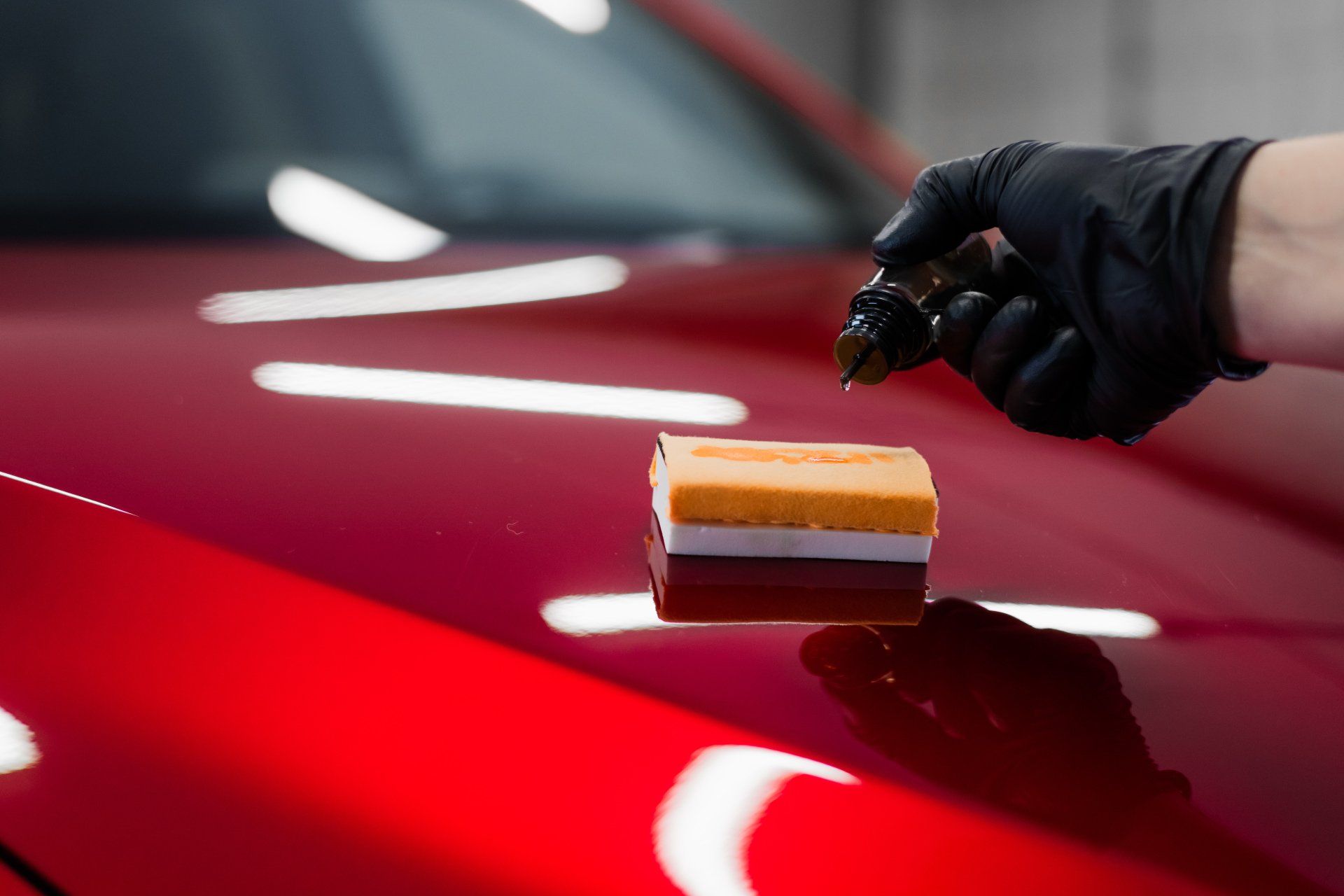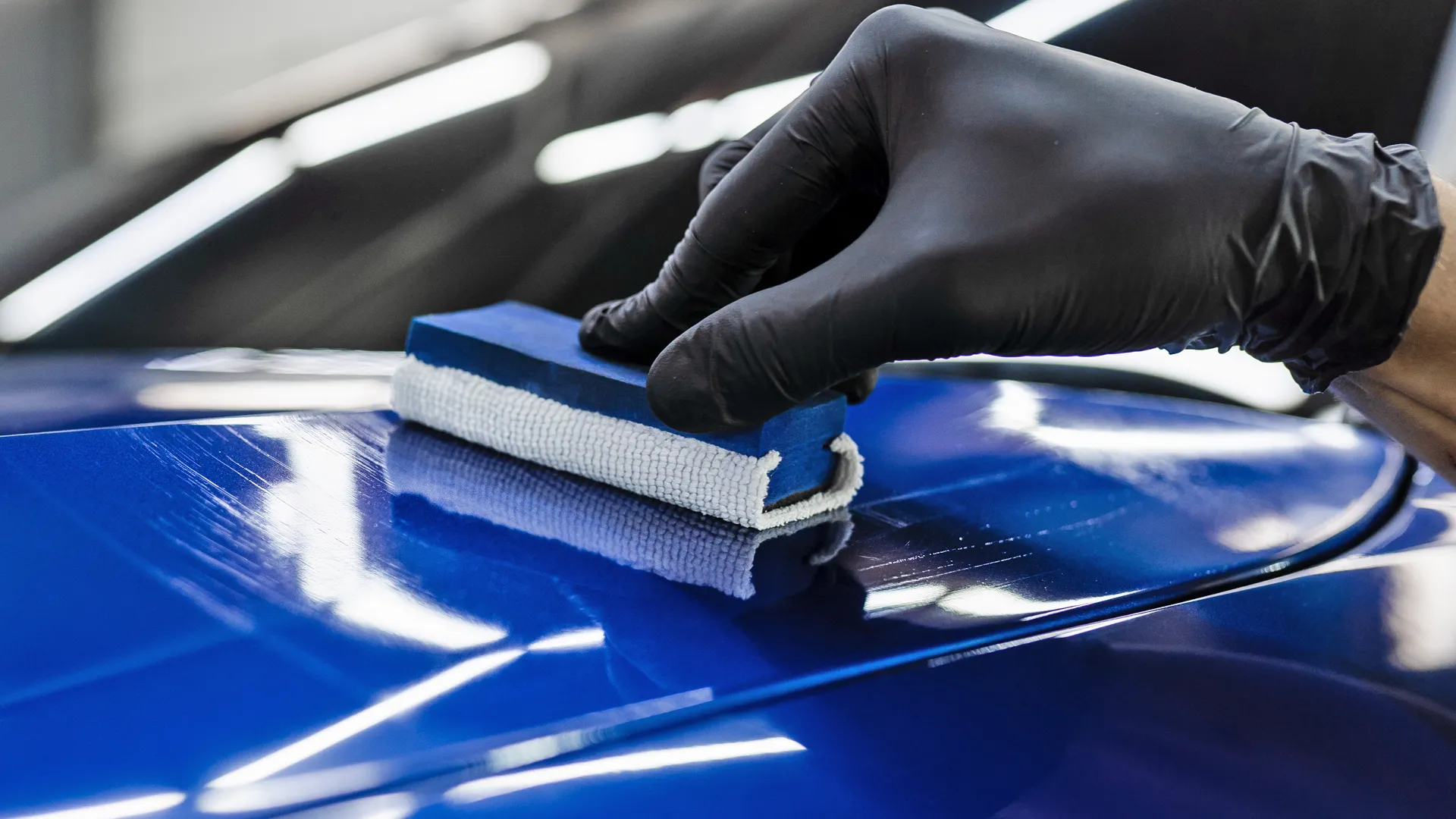How Ceramic Coating Enhances Your Vehicle's Protection and Appearance
How Ceramic Coating Enhances Your Vehicle's Protection and Appearance
Blog Article
Ceramic Finishing vs. Typical Wax: Which Offers Much Better Long-Term Defense?
The argument between ceramic finishings and conventional wax for car defense has garnered significant attention amongst vehicle lovers and specialists alike. While both satisfy of guarding paint, their differences in toughness, application, and lasting upkeep costs may affect a customer's choice. Ceramic coatings flaunt superior long life and resistance to ecological factors, yet the intricacy of their application questions about ease of access and practicality. As we explore these contrasting alternatives, it comes to be necessary to consider not only the immediate advantages however also the implications for vehicle treatment gradually.
Summary of Ceramic Coating
Ceramic coating has acquired considerable appeal amongst automobile enthusiasts and detailers alike due to its advanced safety high qualities. This ingenious modern technology is made to create a long lasting, hydrophobic guard over an automobile's paint surface, considerably boosting its resistance to environmental pollutants such as dust, UV rays, and chemical spots. Unlike typical wax, which provides a short-lived layer of protection, ceramic coatings bond at a molecular degree with the paint, supplying durable durability-- often expanding past 2 years with correct upkeep.
The application procedure involves meticulous preparation of the car's surface area, consisting of cleaning and polishing to make sure optimum adhesion. As soon as used, the finish treatments to create a durable layer that not only adds depth and gloss to the paint however likewise streamlines upkeep. With its hydrophobic residential or commercial properties, ceramic covering enables water and dirt to slide off even more conveniently, reducing the regularity of washes and minimizing the threat of swirl marks.
Additionally, ceramic coatings are offered in various formulations, allowing users to choose items customized to their particular demands and preferences. In general, ceramic coating stands for a considerable development in paint defense innovation, delivering premium efficiency compared to conventional choices.
Summary of Typical Wax
Traditionally considered as a staple in auto treatment, wax functions as a preferred selection for those seeking an uncomplicated method to improve and shield their vehicle's paint - ceramic coating. Automotive wax usually comprises all-natural components, such as carnauba, or synthetic compounds, developed to create a protective layer on the surface area of the paint. This layer not only boosts the lorry's gloss and beam but likewise supplies a barrier versus environmental pollutants
The application of wax is usually easy to use, making it available for both specialists and Do it yourself fanatics. As soon as applied, wax calls for a healing period, after which it solidifies to develop a safety shell.
However, while wax is effective for enhancing the aesthetic charm of a vehicle, it is necessary to note that the defense it supplies may demand a lot more constant reapplication compared to different products, such as ceramic finishes. Generally, traditional wax continues to be a preferred alternative for those prioritizing ease of use and immediate visual improvement.
Sturdiness and Durability Comparison
While both ceramic finishings and standard wax deal protective advantages for automotive paint, their durability and durability differ dramatically. Conventional wax, generally made from natural carnauba or synthetic polymers, usually supplies a protective layer that lasts about 3 to 6 months. This relatively short life-span demands routine reapplication to preserve optimum security.
On the other hand, ceramic finishings are engineered from sophisticated nanotechnology, developing a covalent bond with the paint surface area. This results navigate here in a durable, hydrophobic layer that can endure for two to five years, depending upon the product and environmental problems. The remarkable durability of ceramic coverings is attributed to their chemical structure, which uses enhanced resistance to scrapes, UV rays, and oxidation.

Protection Versus Ecological Factors
Shielding an automobile's paint from ecological aspects is critical for keeping its look and value over time. Vehicles are regularly revealed to a variety of components, consisting of UV rays, bird droppings, tree sap, acid rain, and roadway crud, every one of which can jeopardize the integrity of the paintwork.
Ceramic finishings supply a robust protection against these ecological aggressors. Unlike conventional wax, which can weaken rapidly under UV exposure, ceramic layers form a view publisher site long lasting, hydrophobic layer that resists the harmful impacts of sunlight and environmental toxins. This advanced modern technology produces a chemical bond with the lorry's surface area, providing remarkable protection that lasts for several years, also in harsh problems.
In contrast, ceramic layers maintain their safety high qualities longer, considerably minimizing the risk of paint damages and guaranteeing that the car maintains its aesthetic allure. As an outcome, ceramic finishings are progressively recognized as the exceptional option for long-lasting defense versus ecological aspects.
Application and Upkeep Distinctions
The approaches of application and succeeding upkeep for ceramic finishes and traditional wax vary substantially, affecting the total user experience and effectiveness of each item. Ceramic layers call for a more detailed application procedure, generally entailing surface area preparation that consists of cleaning, decontaminating, and polishing the lorry. Once the surface is ready, the ceramic layer is applied in a controlled setting, commonly requiring professional expertise to make certain correct curing and bonding to the paint.

While both products enhance automobile look, the longer-lasting protection offered by ceramic layers may justify their initial financial investment, in spite of the more requiring application procedure. Alternatively, standard wax stays a prominent option for those looking for a less complex, albeit temporary, service.

Final Thought
In conclusion, ceramic coatings demonstrate significant advantages over standard wax in terms of durability and ecological security. With a lifespan expanding two to 5 years and remarkable resistance to UV rays, dust, and chemical spots, ceramic finishes provide a more reliable solution for long-term automobile upkeep. The application procedure may require expert know-how, the resulting weblink cost financial savings and minimized frequency of reapplication highlight the worth of ceramic finishings for those looking for optimum car protection.
The argument between ceramic finishes and conventional wax for automobile defense has actually amassed substantial focus among automobile lovers and professionals alike. Unlike traditional wax, which supplies a temporary layer of security, ceramic layers bond at a molecular level with the paint, offering lasting longevity-- usually prolonging beyond 2 years with proper upkeep.
While both ceramic layers and typical wax offer protective advantages for automotive paint, their longevity and long life vary considerably. For automobile fanatics seeking long-lasting security, ceramic coatings offer a compelling advantage over standard wax items.
In conclusion, ceramic finishings demonstrate substantial benefits over typical wax in terms of durability and environmental protection.
Report this page